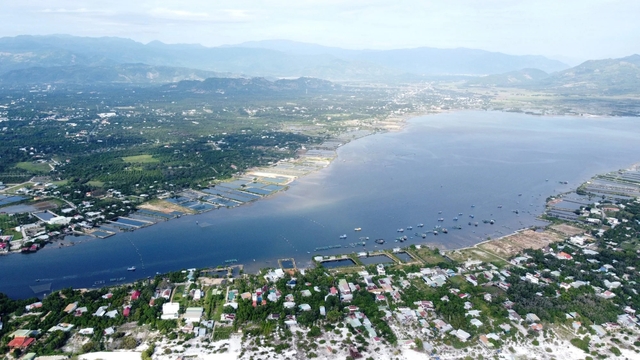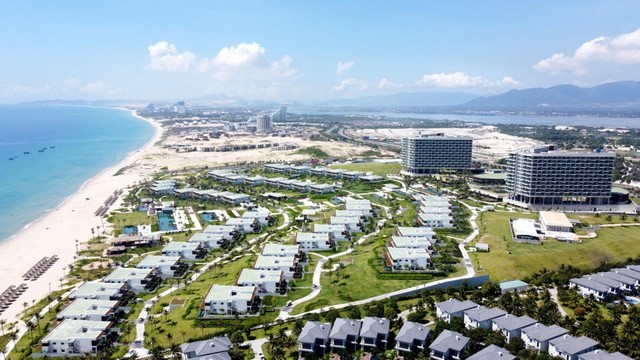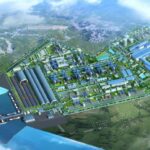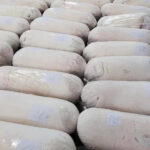
Cam Lam District was established in 2007. It currently accounts for 10.5% of the total area and 8.7% of the population of Khanh Hoa province. The district is bordered by Dien Khanh district and Nha Trang city to the north. It is bounded by Cam Ranh city to the south. To the east, it is adjacent to the East Sea and Truong Sa archipelago district. To the west, it borders Khanh Son and Khanh Vinh districts in Khanh Hoa province.
On February 28, Deputy Prime Minister Tran Hong Ha signed a Decision approving the General Master Plan for the new urban area of Cam Lam, Khanh Hoa province until 2045. The planning area includes the entire administrative boundary of Cam Lam district, with a total natural area of approximately 54,719 hectares.
The goal is to build and develop Cam Lam into a high-growth powerhouse in southern Khanh Hoa province and the South Central Coast region, contributing to the early elevation of Khanh Hoa to a centrally-run city. At the same time, it aims to develop a modern airport city, an internationally recognized eco-tourism and logistics hub, a global financial and intellectual service, and innovation center, an international center for education, healthcare, research and application of new technologies, a city with a high-quality living environment, and synchronized and modern infrastructure.
In terms of nature, this is a international airport city, developed based on the smart city model, nationally innovative and interacting at an international level. Cam Lam is also a center for innovation and creativity based on the knowledge economy, science and technology, and regional development cooperation, focusing on developing the financial sector, trade and services, education and training, and high-tech application research institutes. It plays a key role in innovation and development of the digital economy in Khanh Hoa province and the whole country.
In addition, the district is a national-level resort and entertainment center, the kernel for the development of tourism in the region and the world; a sustainable urban area, a prerequisite for the development of green technology and eco-friendly environment, and adaptation to climate change.
The district has an international airport, expressway, railway, and national highway
According to the plan, the new urban area of Cam Lam will develop based on a concentrated urban model in the delta region and develop tourism in the coastal strip in the east associated with the preservation of the unique landscape of Thuy Trieu – Cam Ranh Bay, Bai Dai beach, and the ecological values of the northern and western mountainous forests.

In terms of transportation, the district has Cam Ranh airport, national highways, and many other bridges and roads. In the future, the new urban area of Cam Lam will have the North-South expressway section from Cam Lam to Nha Trang, with 4-6 lanes; National Highway 1; and bypass roads for National Highway 1.
Regarding provincial roads, the scale includes 9 provincial roads that meet at least level III standards, with 2 lanes, and in urban areas, the scale follows the urban planning. Specifically, provincial road 653c (Huong Lo 39C); provincial road 655 (West Road of Cam Ranh Peninsula); provincial road 655B (East-West Axis); provincial road 655D (East-West Axis); provincial road 656 (Provincial Road 9); provincial road 657; provincial road 657K (Provincial Road 3 and Hon Ba road); provincial road 6571.
In terms of railway, the province will also build a new high-speed railway line from north to south parallel to the North-South expressway through Cam Lam; construct a new urban railway line from Cam Ranh airport to Nha Trang city.
In 2023, the socio-economic situation of Cam Lam has achieved some encouraging results. Industrial production value reached over 14,515 billion dong, an increase of 12.3% compared to 2022. The number of tourist stays in the district reached 517,800, including 298,928 international visitors and 218,872 domestic visitors; the total number of tourist staying days was 1,543,648 days; revenue at accommodation establishments reached 3,076 billion dong, an increase of 3.4 times compared to 2022. The state budget revenue in the district reached over 386.3 billion dong, reaching 110.7% of the allocation by the district People’s Council, exceeding 10.7% compared to the previous year.












